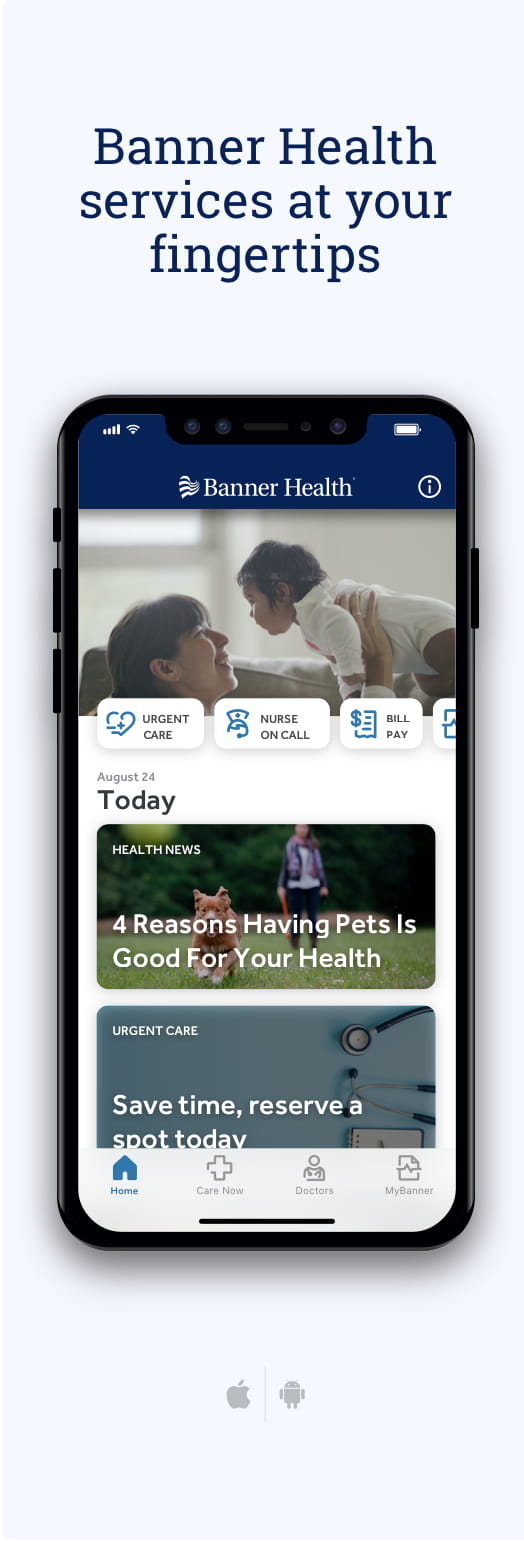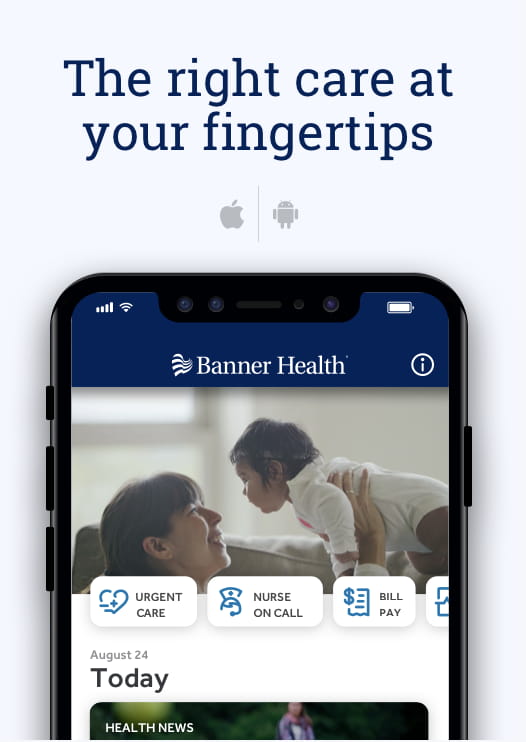Little teapots are no longer just for a spot of tea. Teapots with long spouts, commonly known as neti pots, have become fixtures in many homes to flush out clogged nasal passages and help people breathe easier and better.
Neti pots, along with other nasal irrigation methods, may not be situated next to your teacups, but many people readily have them on hand to bring relief to nasal congestion (a runny or stuffy nose), colds and allergies.
“Nasal irrigation is typically when you use a large volume of saline solution to help flush the nasal and sinus passages,” said Nora Odisho Domit, DO, an adult and pediatric allergist and immunologist with Banner Health. “This process helps clear the passages of mucus, bacterial and viral particles, allergens, and irritants such as dust.”
These sinus-rinsing devices come in all shapes and sizes, from small teapots to squeeze bottles to battery-operated pulsed water devices.
Irrigating your sinuses regularly at home is generally a safe and effective way to breathe easier and find relief. But if you’ve never used one before, it can be unclear.
No one “nose” more about these small nasal vessels than Dr. Odisho. She shared information about the different types of irrigation devices and how to use them properly.
The different types of nasal irrigation devices
Nasal irrigation can go by many other names, such as a nasal wash, nasal douche, or lavage. Still, they all do the same thing: They use a saltwater solution to force out bacteria and other germs in the sinus passages behind your face.
The neti pot
As mentioned earlier, the most common irrigation tool is a neti pot. You place the spout into one of your nostrils, tilt your head to one side and let gravity take effect. The saline solution flows out of the neti pot, through your nasal cavity, and out the other nostril.
Spray or squeeze bottle
Unlike a neti pot that relies on gravity, a squeeze bottle gently pushes the water through your nasal passages. However, both work to flush out the passages. With a squeeze bottle, you may also have to tilt your head back and forth to get the water into both nostrils.
Battery-operated water devices
Battery-powered devices like Navage suction to flush out allergens, mucus and germs. The tool has two chambers, one for water and a saline pod and the other to hold all the removed gunk.
Saline nasal sprays
Saline nasal sprays deliver a fine mist into your nasal passages. They can help moisturize the nostrils' lining but aren’t as effective as the other nasal rinses.
Some people have personal preferences based on which they prefer, but if you want the flexibility to control pressure, you may want to stick with a squeeze bottle.
Are there any risks in rinsing or irrigating your sinuses?
Nasal irrigation is generally safe, but it is essential to keep the device clean and use sterile, treated water sources.
“You should use distilled or sterile water, filtered water or previously boiled water that has cooled to a lukewarm temperature,” Dr. Odisho said. “The Centers for Disease Control and Prevention (CDC) recommends you use filtered water labeled as NSF 53 or NSF 58. The label may also say ‘absolute pore size of 1 micron or smaller.’”
The CDC also recommends boiling tap water for 1 minute (or 3 minutes at elevations above 6,500 feet).
Tap water, especially well water, has natural bacteria or amoebas that could cause a deadly infection. One harmful microorganism is a brain-eating amoeba called Naegleria fowleri. It can enter your body and lead to a disease known as primary amebic meningoencephalitis (PAM). Although infections like PAM are rare, they do occur and are usually fatal.
Follow the manufacturer’s instructions for the best cleaning method, and let the device dry completely. Avoid passing germs to others. Do not share your nasal irrigation device with anyone else.
How to properly use nasal irrigation devices
To clear your sinuses, follow these steps:
- Wash your hands. Use soap and running warm water.
- Create a saline solution. Many saline solutions come prepackaged with nasal irrigation devices, but you can also make a solution at home. Mix warm, sterile water with iodide-free salt to create a saline (isotonic) solution.
The American Academy of Allergy, Asthma & Immunology recommends the following saline sinus recipe:- Mix three teaspoons of iodide-free salt with one teaspoon of baking soda and store in a small airtight container.Add one teaspoon of the mixture to 8 ounces of lukewarm sterile water.
- Make sure the water is lukewarm – not scalding hot or too cold. If you recently had nasal surgery for chronic sinusitis, there is a risk of developing boney growths in the nose called paranasal sinus exostoses if you use a cold solution.
- Stand with your head over a sink or in the shower and follow the directions that came with your nasal irrigation device for head positioning.
- Use your device of choice and follow the manufacturer’s directions.
- During treatment, ensure you breathe through your mouth, not your nose.
- Allow the solution to pour out your other nostril into the drain.
- Repeat on the other side.
- After use, properly wash, rinse and let the device air dry between uses.
You can start with one irrigation treatment a day. If you find it helpful, you can increase it to two to three times a day.
“As long as you are using proper cleaning techniques for the bottle or device and using the appropriate solution, you can use nasal rinses safely on a daily basis,” Dr. Odisho said.
Takeaway
At-home nasal irrigation effectively treats many sinus issues, including acute and chronic sinusitis, nasal congestion, colds and seasonal allergies. It can help clear mucus, moisten nasal passages and remove allergens like dust.
Talk to your health care provider if you have questions or concerns about using a saline nasal rinse or if your symptoms don’t improve. You should also see your provider if you experience facial pain, burning nose or any problems after using this treatment.
Have concerns about treating sinus congestion?
Schedule an appointment with a primary care provider.
Schedule an appointment with an ear, nose and throat specialist.
Schedule an appointment with an allergy and asthma care specialist.


